Is Samsung Galaxy XR everything Apple Vision Pro should have been?
Everything you need to know about Samsung's new Android XR headset.
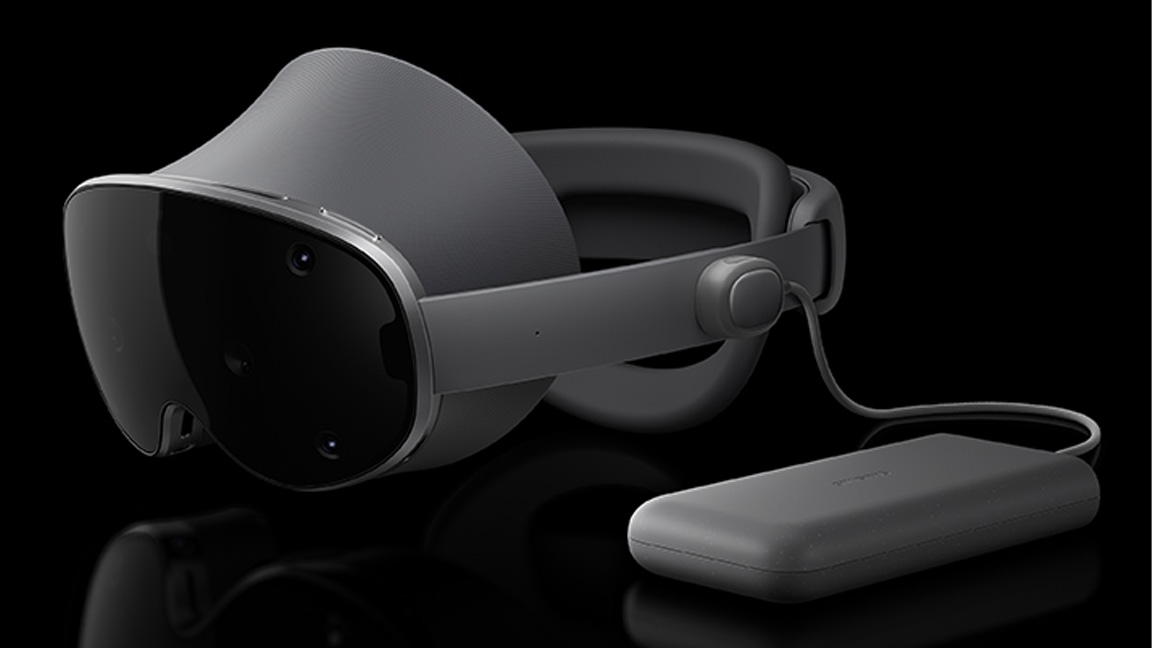
If you're joining us from early 2024, I have news. The Apple Vision Pro didn't lead to crowds roaming the streets wearing futuristic headsets like in that episode of The Simpsons. Apple's spatial computer turned out to be a niche product, which is unsurprising given the price tag.
But now the Cupertino tech giant's arch-rival Samsung has come along with its own competing device. Could the Samsung Galaxy XR be the device that finally makes mixed reality (MR) the new way to work and play?
On paper, the device offers some serious competition for Apple, promising the intuitive and immersive experience of the Vision Pro but at almost half the price (and looking just slightly less ridiculous). But the Samsung Galaxy XR isn't important only in its own right. The bigger picture is that it introduces Android XR as a more open competitor for VisionOS, and that has the potential to do the same thing for mixed reality as Google's mobile operating system did for smartphones when it emerged as a rival to iOS back in 2008.
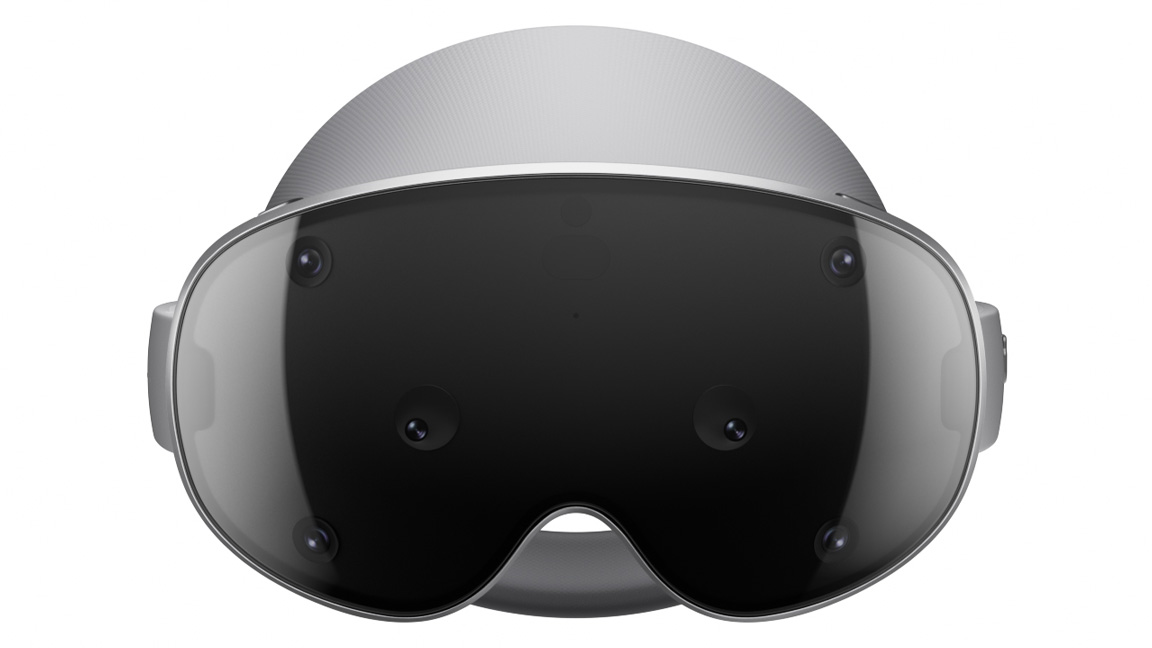
What is Samsung Galaxy XR?
Samsung Galaxy XR is the first mixed reality headset to run on Google's Android XR operating system. Previously referred to as Project Muhan before this morning's late-night launch (3 am in the UK), the device resembles and behaves similarly to the Vision Pro, even though Apple prefers to describe its headset as a 'spatial computer' rather than a mixed reality device.
Like Apple's headset, the system projects floating app windows over the space around the user. Windows and apps can be controlled by hand gestures like pointing, tapping, pinching and holding and dragging. Additionally, like Vision Pro, the headset features eye tracking. This can also be used to navigate the interface.
Where things start to differ is that Samsung is also offering official Galaxy XR controllers for a more traditional interaction comparable to that of devices such as the Meta Quest and PSVR. The headset also works with Bluetooth gamepads for compatible games.
But the biggest difference is the operating system. Android XR could be a game-changer for innovation in mixed-reality hardware and software. With no more Apple monopoly over the spatial computing experience, the new system could spark a boom in new MR headsets and smart glasses from other manufacturers, all compatible with the same software and apps.
Daily design news, reviews, how-tos and more, as picked by the editors.
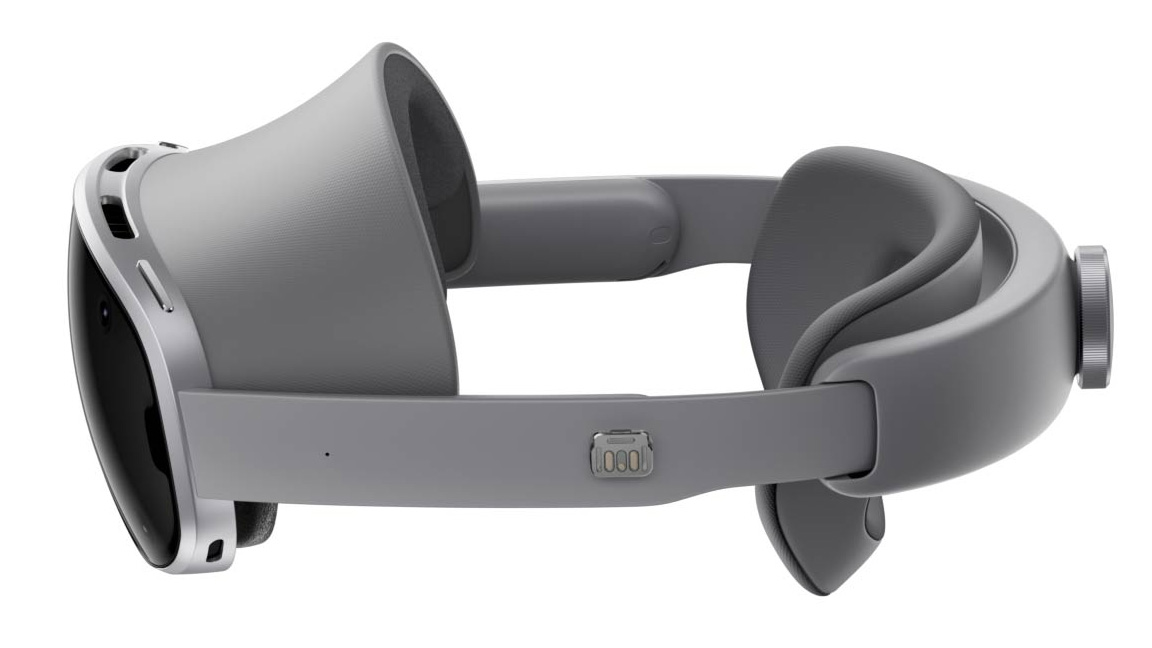
Samsung Galaxy XR design
Like the main features, the Galaxy XR design immediately recalls the Vision Pro, but there's a difference in weight that could work in its favour. It weighs 545g / 19.2oz compared to the 748g / 26.4oz of Apple's spatial computer. Reviewers who have already had demos of the headset say Samsung's device feels notably lighter and more comfortable to wear, overcoming one of the biggest complaints about the Vision Pro.
The Galaxy XR's battery pack is also very slightly lighter than that of the Vision Pro. It connects similarly via a cable that allows it to be put in a pocket. Samsung says it lasts up to two hours with general use, comparable to the M2 Vision Pro but slightly less than Apple's new M5 headset.
Another difference is that the Galaxy XR leaves a space below eye level, which could help the user remain more aware of their surroundings to avoid disorientation. Clip-on light blockers come included to cover the area when more immersion is desired.
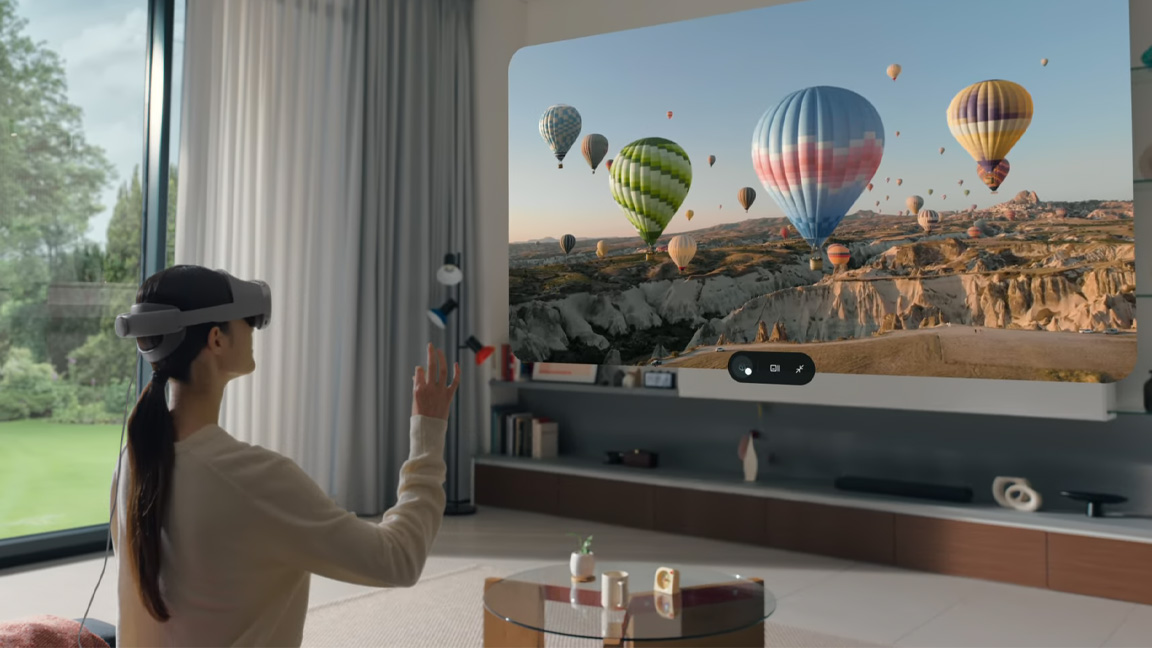
Samsung Galaxy XR specs
In terms of specs, the Galaxy XR joins the Vision Pro in outclassing any other VR headset on the market. It has a 29-million-pixel micro-OLED display system that shows a 3,552-by-3,840-pixel picture to each eye in a 109-degree field of view. That compares to 23 million pixels on the Vision Pro. Apple doesn’t provide the Vision Pro's per-eye resolution, while the Meta Quest 3 provides just 2,064 by 2,208 pixels.
Two 6.5-megapixel stereoscopic cameras fitted with 18mm, f/2.0 lenses feed video of the user's surroundings to the display, while four inward-facing cameras track eye movements, flicker, and depth, and six outward-facing cameras track position and hand movements.
In terms of processing, it's powered by Snapdragon XR2+ Gen 2 chip. Qualcomm notes that its chip was designed specifically for XR and says the new generation has a 15% higher maximum GPU frequency than the XR2 that comes in the Meta Quest 3. Apple's Vision Pro comes with the more generalist M2 or M5 chip plus a separate R1 co-processor for its spatial processing.
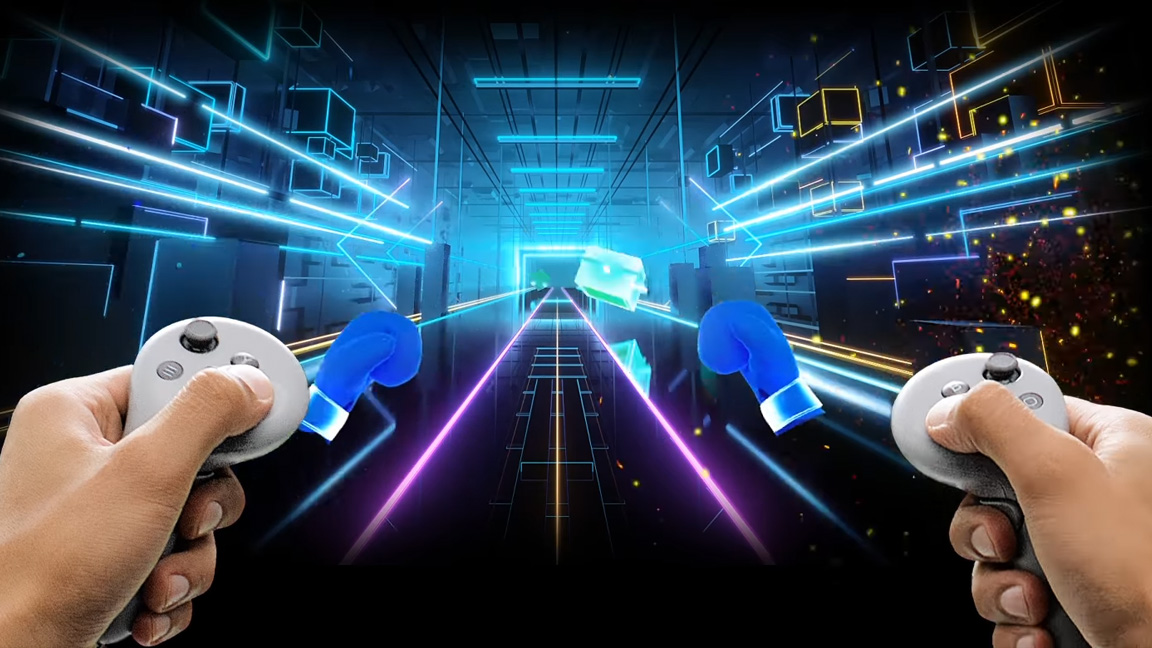
Samsung Galaxy XR price
The biggest difference between Vision Pro vs Samsung Galaxy XR, other than the operating system, is the price. Samsung's headset starts at $1,799.99. That might rule it out as a mass market device (The Meta Quest 3 is just $500), but it's massively more accessible than the $3,500 that Apple charges for the Vision Pro. That makes it feel like this isn't only a headset intended for super fans, tech obsessives and pro mixed-reality creators and could just break into mainstream use.
Aiding things further, Samsung and Google are offering a pack of services and apps, including year-long memberships to Google AI Pro, YouTube Premium and Google Play Pass, which Samsung says are worth more than $1,000. And this being Samsung, it's much more likely that we might see some deeper discounts during sale events.
The price can rise a little if you want the extras, with the Galaxy XR Controller and Travel Case, each priced at $249.99.
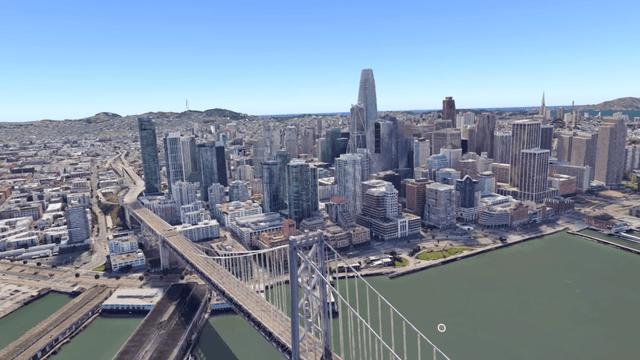
What apps and games are available?
Before the launch announcement, Android XR games were appearing in the Google Play Store. Launch-day apps include Virtual Desktop and Google Maps XR (above), while games include StatusPRO Inc's NFL Pro Era, Owlchemy Labs' Inside [JOB], Vacation Simulator, Job Simulator and Dimensional Doubleshift. Other titles include Asteroid and Naver CHZZK XR.
It's Samsung’s deep relationship with Google that's a win here. The Galaxy XR launches with a confident lineup of apps that bridge creativity, entertainment and productivity. Google leads the way with immersive versions of Maps, Photos and YouTube, while Adobe’s launched Project Pulsar XR (below) for adding 'spatial effects' to videos. Now in beta, the app allows 3D compositing of text and other effects in videos captured by a phone or the Samsung Galaxy XR headset.
Games like Job Simulator and Walkabout Mini Golf showcase the headset’s playful side, alongside relaxing spaces from Calm and Litesport’s virtual fitness studios. With Android XR support baked in, most smartphone apps slip easily into spatial computing, giving Galaxy XR an impressive head start in blending real-world practicality with genuine creative freedom.
Unity 6 Android XR support should make it possible for more developers to bring their games to the platform relatively quickly.
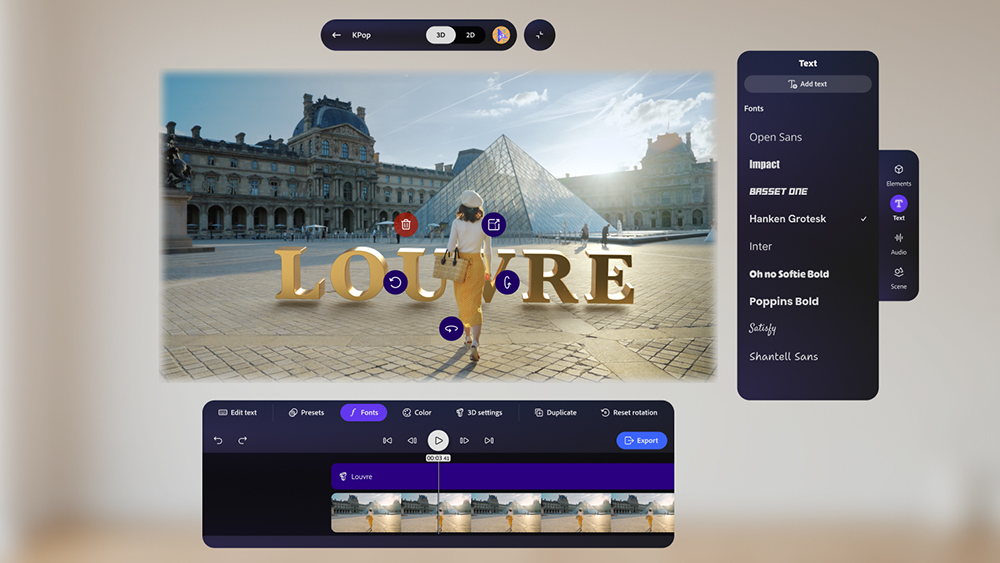
The Galaxy XR is available to order on the Samsung website from today.

Joe is a regular freelance journalist and editor at Creative Bloq. He writes news, features and buying guides and keeps track of the best equipment and software for creatives, from video editing programs to monitors and accessories. A veteran news writer and photographer, he now works as a project manager at the London and Buenos Aires-based design, production and branding agency Hermana Creatives. There he manages a team of designers, photographers and video editors who specialise in producing visual content and design assets for the hospitality sector. He also dances Argentine tango.
- Ian DeanEditor, Digital Arts & 3D
You must confirm your public display name before commenting
Please logout and then login again, you will then be prompted to enter your display name.
